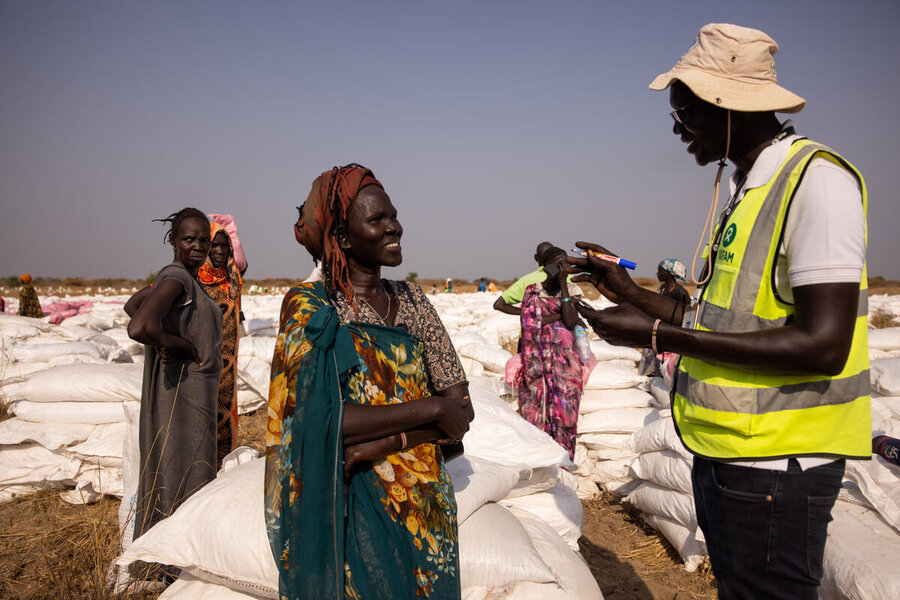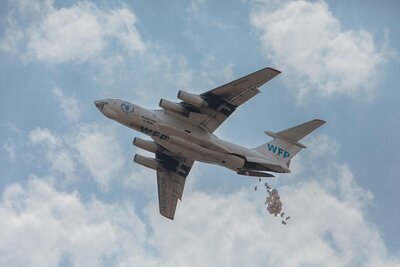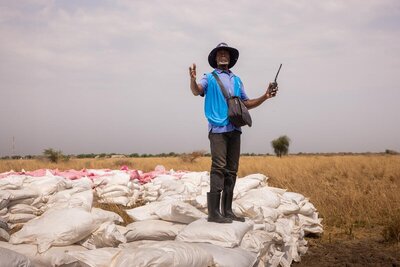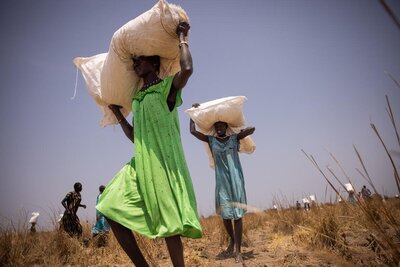Humanitarian airdrops: Can life-saving food fall from the sky?
As the use of airdrops to bring relief to hungry civilians in Gaza is heatedly debated in the media, we take a look at key questions about how airdrops work and why they are not a solution for every crisis.

Are airdrops an efficient way to deliver assistance?
The costs of airdrops – aircraft, fuel, personnel – can be as much as seven times higher than for road transport. At the same time, one convoy of trucks can deliver more food than dozens of flights. These considerations, together with the risks involved (especially in highly populated areas where people risk being struck by cargo or injured as crowds rush to the airdrops), make them a last resort, only to be used when there is no other way to reach people in need.
When should airdrops be used?
Food dropped from a plane can be a lifeline for people in desperate situations – trapped behind front lines, for example, or stuck in remote areas with no road infrastructure. In 2016, the World Food Programme (WFP) used airdrops to reach 100,000 people in the besieged Syrian city of Deir Ezzor. These were the highest-altitude civilian airdrops in history, performed from over 5,000 metres to minimize the risk of the aircraft being hit by ground artillery.
At the moment, WFP is using airdrops only in remote, conflict-stricken areas of South Sudan where hunger is soaring and access by road and river is blocked.



Are airdrops safe?
To avoid accidents, designated drop zones need to be open areas, ideally flat and clearly visible from the air. The size varies depending on the plane's altitude: they can be as small as a football pitch when the aircraft flies low, or more than a square kilometre (that's about 210 football fields) for high-altitude drops.
A team on the ground ensures the drop zone is clear before authorizing the release of the cargo from the aircraft, and coordinates the distribution of supplies.
How long have airdrops been used?
The first airdrop of emergency humanitarian relief for the United Nations system happened in August 1973. The WFP-led operation saw more than 30 cargo aircraft from 12 national air forces drop assistance in Africa’s Western Sahel, where six years of drought had taken their toll on people in Chad, Mali, Mauritania, Niger, Senegal and what was then called Upper Volta, now Burkina Faso. The relief effort continued for three years.
How do airdrops work?
Strong packaging is key for airdropped parcels to withstand ground impact. Each bag is reinforced with six layers, with the colour of the outer bag indicating content: white for cereals, red for pulses and blue or green for specialized nutritious foods.
It is critical to analyse meteorological data and check it against actual weather conditions, based on communication with colleagues on the ground. Strong winds, sandstorms and other adverse weather conditions can affect the accuracy of airdrops and jeopardize the success and safety of operations.
The crew on board the aircraft release the cargo after receiving the green light from a team on the ground, ensuring that the drop zone is clear. The ground team later coordinates the distribution of the food.
